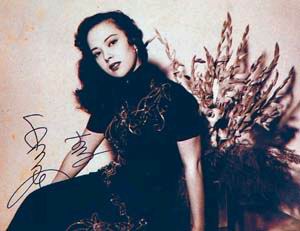Between the two World Wars, Shanghai was one of the most cosmopolitan and sophisticated cities in the world. It was also one of the world’s hotspots for Jazz. The great jazz bands toured there, and there was a considerable pool of local talent. Pre-eminent among the local artists were the “Lounge Divas”, female singers who owed their original inspiration to American stars like Billie Holiday and Bessie Smith, and to European cabaret singers like Edith Piaf, but who quickly developed their own, individual styles. Among the greatest of these divas were Li Xiang-Lan, Bai Kwong, Chang Loo, and Chow Hsuan. All had glorious voices. I recently acquired a fascinating 2‑cd set. The first cd has the original recordings from the 1930’s. The second has modern remixes of the same songs, done up to suit the current taste for dance music in Asia. I have no objection to these. The dance remixes are perfectly legitimate, and reasonably well done. But the originals are far more interesting. They take you on an amazing journey to a place and era lost in dim light and a haze of cigarette smoke.
A number of years ago, I was walking across the plaza of Toronto’s City Hall. Designed in the 1960’s by Finnish architect Viljo Revell, it’s a pleasant place, filled with skaters in the winter (when the ornamental pond is frozen), and music concerts in the summer. On this particular occcasion, a Big Band was playing music from the 1930’s and 1940’s. Folding chairs had been set up in the plaza, and there was a reasonably large crowd enjoying the music. When I sat down among them, I noticed that almost everyone there was a) very old, and b) Chinese-Canadian. I turned to a dignified-looking elderly couple, and asked them why so many Chinese had come to this concert. With a twinkle in his eye, the man said: “This is the music of our youth. We listened to this in Shanghai, when we were just married.” Listening, now, to Chang Loo singing “All the Stars in the Sky”, I think I can understand what that twinkle in his eye was all about.

0 Comments.